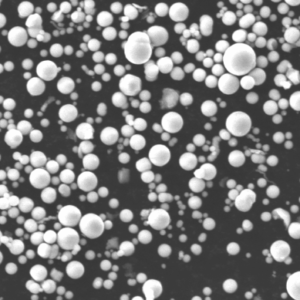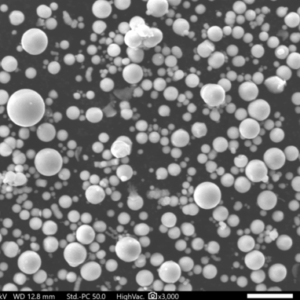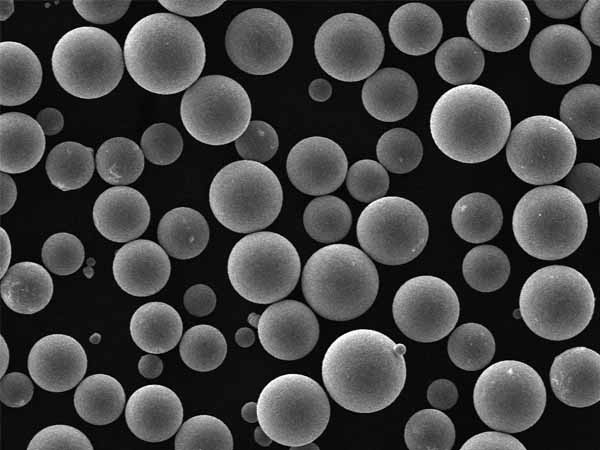Overview of BNi-7 Powder
When it comes to brazing alloys, BNi-7 powder stands out as one of the most advanced and efficient choices for high-temperature applications. This nickel-based brazing alloy is celebrated for its exceptional performance in joining stainless steel, superalloys, and other high-performance materials. But what makes it so special? Let’s explore.
BNi-7 powder is a low-melting-point alloy that primarily consists of nickel with small amounts of boron and silicon, which act as melting point depressants. This unique composition allows it to flow smoothly at lower temperatures compared to other nickel brazing alloys, reducing the risk of thermal distortion and oxidation. Whether you’re tackling aerospace, automotive, or chemical processing challenges, BNi-7 powder offers unmatched reliability.
Why BNi-7 Powder Matters
Ever wondered why BNi-7 is preferred over other brazing powders? Its low-temperature performance, high corrosion resistance, and ability to withstand extreme environments make it a top-tier choice for many industries. It’s like the Swiss Army knife of brazing powders: versatile, dependable, and always ready to perform.
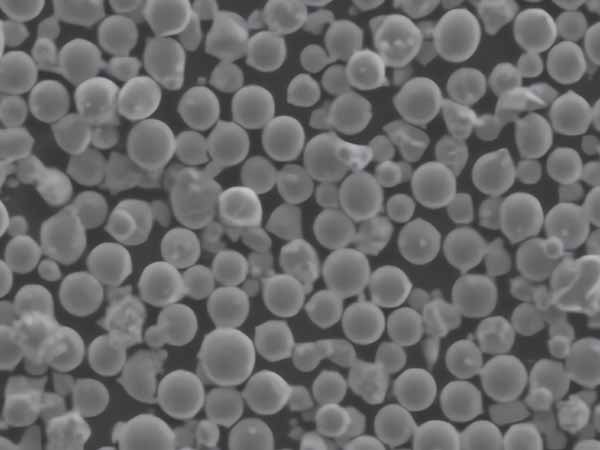
Types and Composition of BNi-7 Powder
BNi-7 is just one variant in a family of nickel-based brazing powders. Let’s compare it with some related models to understand its specific strengths.
| Powder Model | Composition (Approx.) | Melting Point (°C) | Key Characteristics |
|---|---|---|---|
| BNi-1 | Ni: 93%, Cr: 7%, Si: 4.5% | 980–1050 | High strength, excellent corrosion resistance |
| BNi-2 | Ni: 92%, Cr: 7%, B: 3.1% | 970–1020 | Versatile, good oxidation resistance |
| BNi-3 | Ni: 93%, B: 3.75% | 980–1065 | Suitable for vacuum environments |
| BNi-4 | Ni: 92%, B: 3.8%, Fe: 2% | 1000–1100 | Excellent flowability, high joint strength |
| BNi-5 | Ni: 94%, Cr: 3.5%, Fe: 2% | 1065–1175 | High melting point for extreme conditions |
| BNi-6 | Ni: 92%, Cr: 4%, Si: 4% | 980–1035 | Good wettability, versatile applications |
| BNi-7 | Ni: 94%, Si: 4.5%, B: 1.4% | 970–1020 | Low melting point, minimal oxidation risk |
| Ni-Cr-B | Ni: 90%, Cr: 10%, B: 4% | 1030–1080 | Good strength and heat resistance |
| Ni-P | Ni: 92%, P: 8% | 880–950 | Low melting point, high wettability |
| BNi-8 | Ni: 96%, Si: 3.5%, B: 0.5% | 950–1050 | Highly corrosion-resistant, smooth flow |
Understanding the Composition
BNi-7 powder’s precise composition enables its low melting point and superb corrosion resistance. Here’s a closer look at its key components:
- Nickel (Ni): The backbone of the alloy, offering excellent thermal and chemical stability.
- Silicon (Si): Lowers the melting point and improves flowability.
- Boron (B): Acts as a melting point depressant and enhances hardness.
Characteristics of BNi-7 Powder
So, what exactly makes BNi-7 powder so effective? Let’s break it down.
- Low Melting Point
BNi-7 has a melting range of 970–1020°C, making it ideal for applications where minimizing thermal impact is critical. It’s like working with a hot glue gun for metal—quick, efficient, and neat. - Corrosion Resistance
Thanks to its nickel-rich composition, BNi-7 withstands harsh chemical environments, whether it’s saltwater or acidic conditions. Perfect for marine and industrial applications. - Good Wettability
The powder flows seamlessly into tiny gaps, ensuring strong and leak-proof joints. This is a game-changer for precision industries like electronics and aerospace. - Oxidation Resistance
Unlike some brazing materials, BNi-7 resists oxidation during the brazing process, ensuring clean and durable joints.
Applications of BNi-7 Powder
The versatility of BNi-7 powder makes it a go-to for various industries. Below is a detailed look at where and why it’s used.
| Application Area | Use Case | Benefits |
|---|---|---|
| Aerospace | Jet engine components, turbine blades | High temperature and corrosion resistance |
| Automotive | Heat exchangers, exhaust systems | Smooth flow, reliable joints |
| Electronics | Sensors, connectors | Precision bonding, oxidation resistance |
| Chemical Processing | Pipes, reactors, and heat exchangers | Withstands harsh chemicals |
| Power Generation | Nuclear reactor components, fuel cells | High thermal stability |
| Marine | Pumps, valves, and shafts | Resistance to saltwater corrosion |
| Medical Devices | Surgical tools, implants | Biocompatibility, reliable bonding |
| Tool Manufacturing | Cutting tools, drills | Enhanced joint strength |
| Energy Storage | Battery components, supercapacitors | Superior conductivity and bond quality |
Specifications and Standards for BNi-7 Powder
When selecting a brazing alloy, meeting industry standards is crucial. Here’s a snapshot of BNi-7 powder’s specifications:
| Parameter | Details |
|---|---|
| Particle Size | 20–150 microns |
| Standards | AWS A5.8, ISO 17672, AMS 4777 |
| Melting Range | 970–1020°C |
| Density | 8.6 g/cm³ |
| Packaging Options | 0.5 kg, 1 kg, bulk (custom sizes) |
Advantages and Limitations of BNi-7 Powder
Advantages
- Lower Brazing Temperature: Reduces thermal distortion in delicate assemblies.
- High Corrosion Resistance: Performs well in aggressive environments.
- Versatile Applications: Suitable for a wide range of industries.
- Excellent Flowability: Ensures smooth and precise bonding.
Limitations
- Cost: Slightly more expensive compared to some alternatives like Ni-P.
- Limited Strength: Not ideal for high-stress load applications compared to BNi-2 or BNi-3.
Comparing BNi-7 Powder with Other Brazing Alloys
| Parameter | BNi-7 | BNi-2 | BNi-5 |
|---|---|---|---|
| Melting Point | 970–1020°C | 970–1020°C | 1065–1175°C |
| Corrosion Resistance | Excellent | Good | Moderate |
| Flowability | Excellent | Moderate | Good |
| Applications | Precision industries | General use | Extreme conditions |
| Cost | High | Moderate | High |
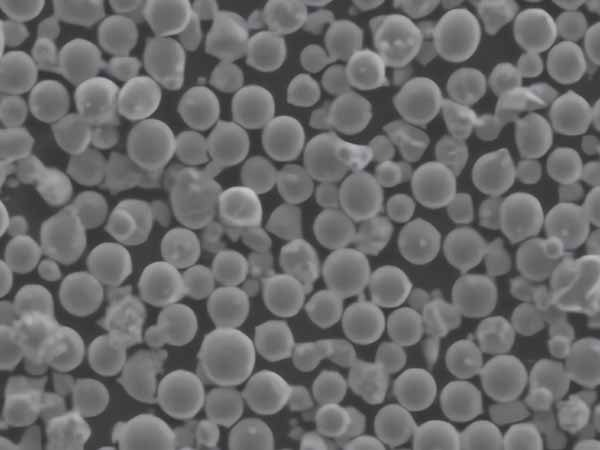
Suppliers and Pricing Details
| Supplier Name | Region | Price (Per kg) | Customization |
|---|---|---|---|
| Höganäs | Global | $100–$150 | Custom particle sizing |
| Metallurgica | Europe | €120–€180 | Pre-alloyed options |
| Indutherm | Asia | $90–$130 | Bulk discounts available |
| Wall Colmonoy | North America | $110–$160 | Specialty grades |
FAQ
| Question | Answer |
|---|---|
| What makes BNi-7 unique? | Its low melting point and excellent corrosion resistance set it apart. |
| Can BNi-7 be used in vacuum brazing? | Yes, it’s perfect for vacuum environments due to its clean flow properties. |
| What are its key applications? | Aerospace, automotive, and chemical processing are major industries. |
| How does BNi-7 compare to BNi-5? | BNi-7 has a lower melting point but less strength than BNi-5. |
| Is it environmentally safe? | Yes, it complies with RoHS and REACH standards. |


